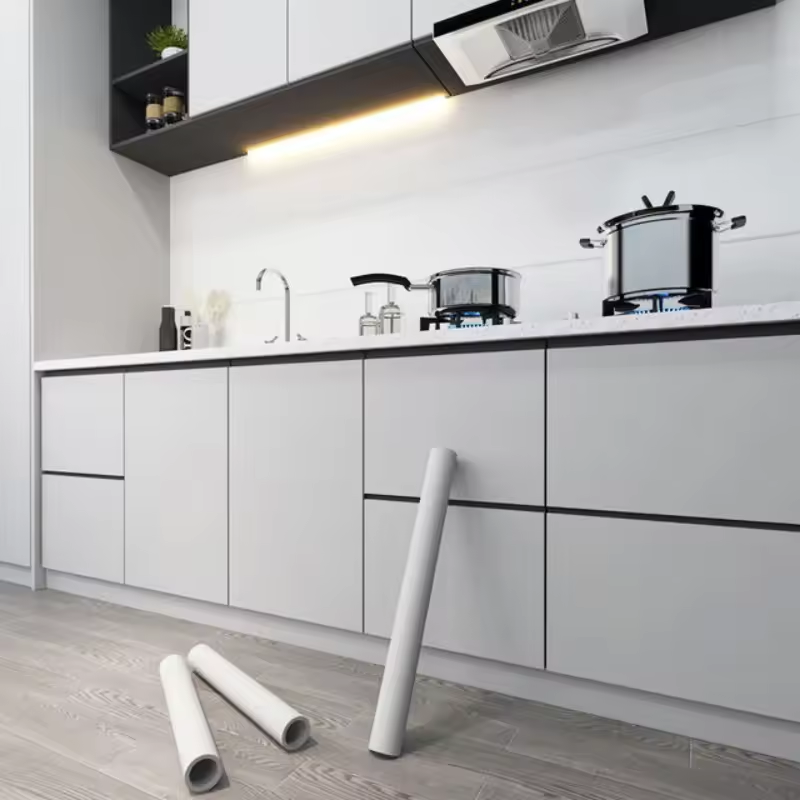Overview of Sink Materials
Sinks play a vital role in both functionality and design within a home. Selecting the right sink material is essential to ensure durability, ease of care, and aesthetic appeal. Different materials offer unique features that cater to various preferences and needs. Understanding these materials will help homeowners make an informed decision.
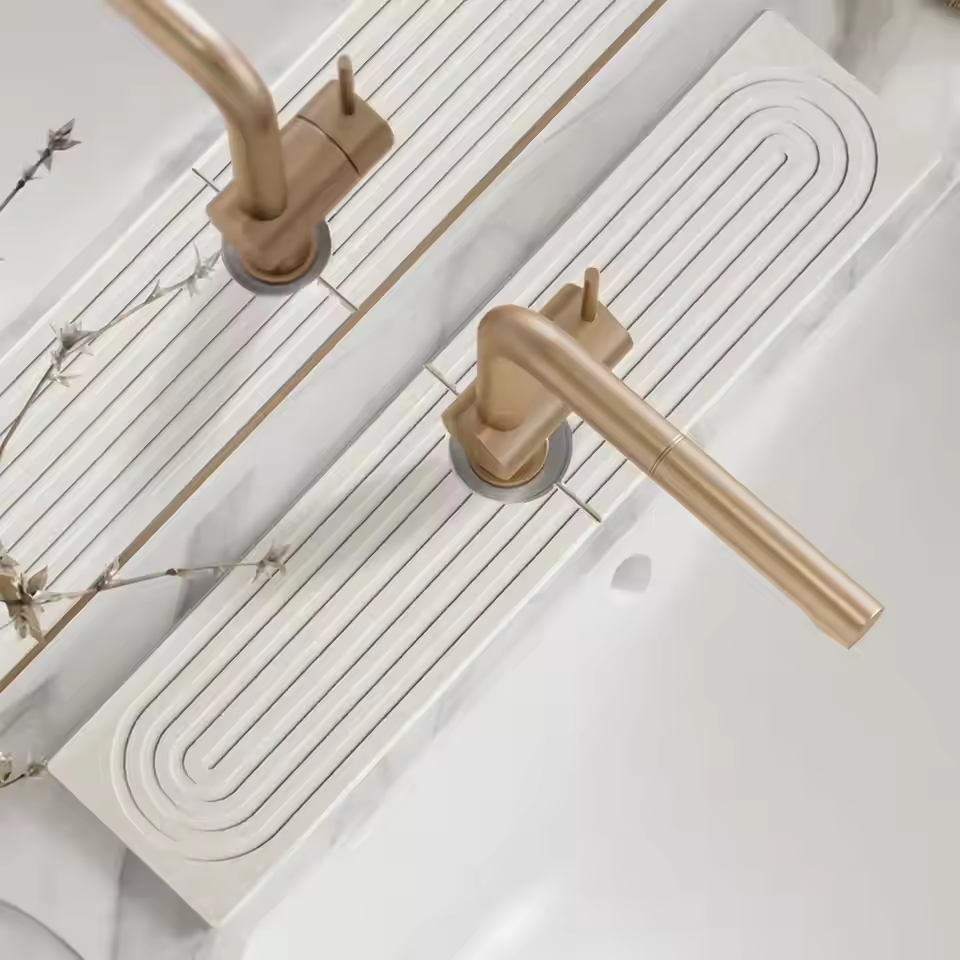
Importance of Choosing the Right Sink Material
Choosing the right sink material impacts both usability and home aesthetics. Durable materials resist damage and last longer. The right texture and finish can complement your kitchen or bathroom design. Certain materials offer features like scratch resistance or antibacterial properties, adding functionality. The proper sink material enhances daily use, improves durability, and blends seamlessly with the surroundings.
Factors to Consider When Selecting Sink Materials
Consider these factors to ensure the perfect sink material for your home:
- Durability: Choose materials that withstand regular wear and tear.
- Maintenance Needs: Opt for easy-to-maintain materials that simplify cleaning.
- Cost: Find a material that fits your budget while offering quality.
- Style Compatibility: Select materials that match your room’s design.
- Functionality: Ensure the material aligns with your usage requirements and household needs.
- Environmental Impact: Some materials are more sustainable and eco-friendly.
By keeping these factors in mind, you can find a sink material that combines practicality, style, and longevity.
Popular Sink Materials and Their Features
Choosing the right sink material depends on preferences and needs. Popular sink materials offer unique features.
Stainless Steel Sinks: Durability and Versatility
Stainless steel sinks are durable, lightweight, and resistant to rust and stains. They are versatile and fit modern designs effortlessly. These sinks handle heavy use and are easy to clean. However, they may show scratches and water spots if not maintained properly.
Porcelain Sinks: Classic and Elegant
Porcelain sinks bring a timeless charm to kitchens and bathrooms. Their smooth finish looks attractive and blends with classic interiors. These sinks resist stains and are easy to clean. While elegant, they can chip or crack under force, so care is needed.
Granite Composite Sinks: Strength and Style
Granite composite sinks combine durability with a stylish look. These sinks resist scratches, chips, and stains. They complement modern designs and provide excellent thermal resistance. However, they can be heavier and require careful installation.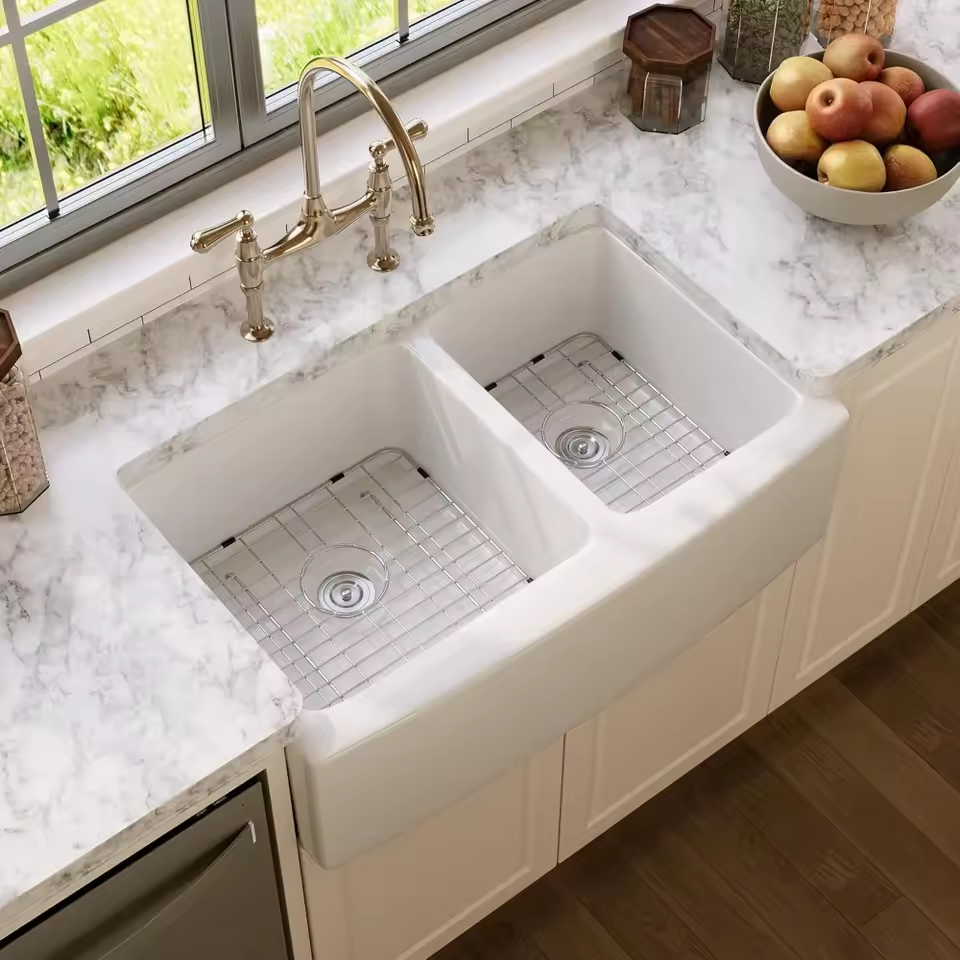
Cast Iron Sinks: Heavy and Durable
Cast iron sinks are durable and feature a glossy enamel finish. They resist dents and scratches, making them ideal for heavy use. Their weight requires sturdy support, and the enamel finish may need regular care.
Copper Sinks: Unique and Antimicrobial Properties
Copper sinks stand out with their distinctive appearance and natural antimicrobial properties. They resist bacteria and patina, creating a unique look over time. However, these sinks require regular polishing and care to maintain their shine and prevent tarnishing.
Benefits and Drawbacks of Common Sink Materials
Pros and Cons of Stainless Steel Sinks
Stainless steel sinks are a popular choice for many homes. They come with distinct advantages and a few drawbacks:
Pros:
- Highly durable and resists rust and stains effectively.
- Lightweight and easy to install in most kitchen setups.
- Versatile and fits with modern or industrial interior designs.
- Simple cleaning methods help maintain their shine over years.
Cons:
- Susceptible to water spots and scratches without proper care.
- Can be noisy during use, though padded options reduce sound.
Advantages and Disadvantages of Porcelain Sinks
Porcelain sinks bring elegance and charm to both kitchens and bathrooms. Here’s what to consider:
Advantages:
- Smooth surface enhances aesthetics with a refined, classic look.
- Resistant to stains and simple to clean with everyday household cleaners.
- Matches well with vintage, farmhouse, or traditional interior styles.
Disadvantages:
- Prone to chipping or cracking when subjected to strong impacts.
- Requires extra care to keep the enamel finish intact over time.
Strengths and Weaknesses of Granite Composite Sinks
Granite composite sinks combine beauty and strength in a single design. Here are their key points:
Strengths:
- High resistance to scratches, chips, and regular wear and tear.
- Stylish and modern appearance suitable for contemporary interiors.
- Excellent thermal resistance prevents damage from hot pots or pans.
Weaknesses:
- Heavier than most materials, requiring more sturdy countertop support.
- Requires careful cleaning to avoid dulling the surface but generally low maintenance overall.
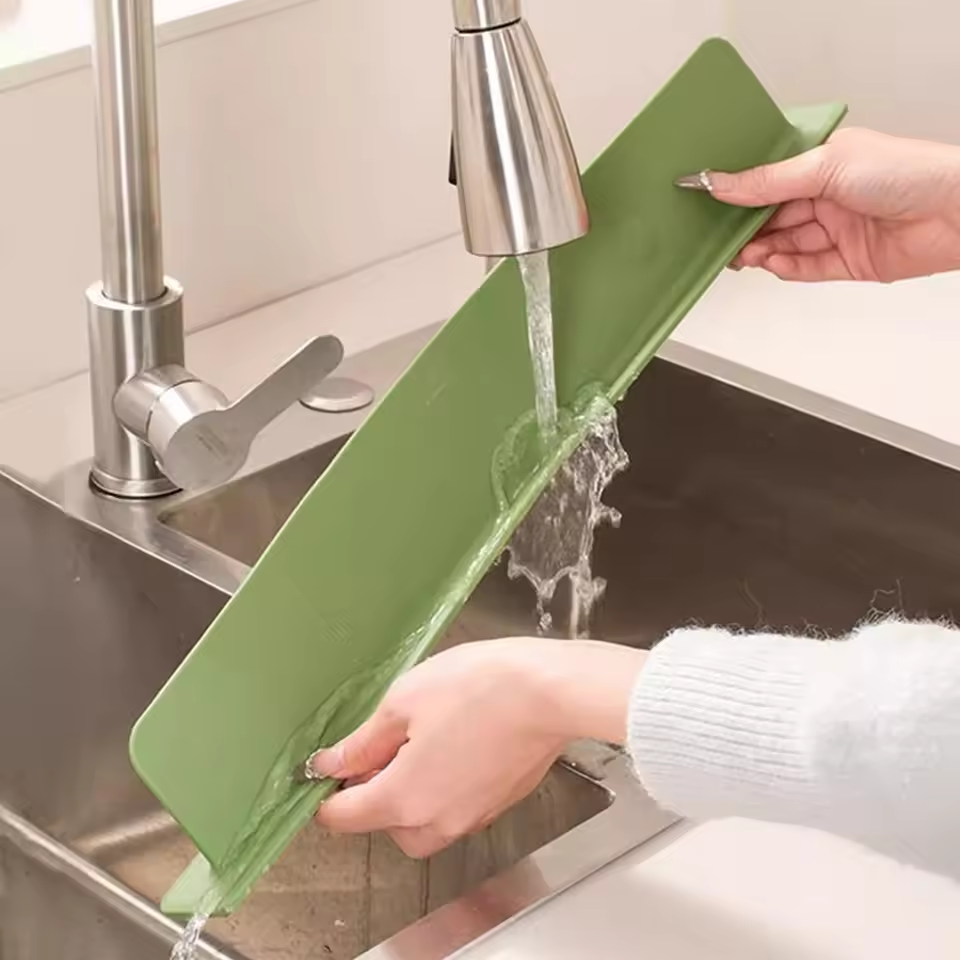
Why Choose Cast Iron Sinks? Pros and Cons
Cast iron sinks have been a trusted option for years. Their benefits and challenges include:
Pros:
- Highly durable and resistant to dents, ensuring years of reliable use.
- Offers a glossy enamel finish that creates a polished and refined appearance.
Cons:
- Heavy material necessitates reinforced installation support.
- Enamel coating may chip or discolor over time without consistent care.
Copper Sinks: Are They Right for You?
Copper sinks offer a unique and eye-catching option for your space. Weigh these factors:
Advantages:
- Natural antimicrobial properties make them a hygienic choice for kitchens.
- Develops a beautiful patina over time, adding character and uniqueness.
Disadvantages:
- Requires frequent polishing to maintain shine and prevent tarnishing.
- Can be more expensive compared to other sink materials.
Maintenance Tips for Different Sink Materials
Caring for Stainless Steel Sinks
Stainless steel sinks are durable but need routine care to maintain their shine. Use a soft cloth and mild detergent for cleaning. Avoid abrasive cleaners to prevent scratches. Rinse and dry the sink after use to avoid water spots. Apply stainless steel polish regularly for added protection and a sparkling finish.
Cleaning and Maintaining Porcelain Sinks
Porcelain sinks resist stains but can chip if mishandled. Clean them with gentle, non-abrasive cleaners. Baking soda or vinegar works well for tackling stains. Use soft sponges to avoid damaging the enamel finish. Avoid dropping heavy objects to prevent chips or cracks. Regular cleaning keeps the surface smooth and spotless.
How to Preserve Granite Composite Sink Quality
Granite composite sinks need proper cleaning to preserve their appearance. Use warm water and mild soap for daily cleaning. Avoid harsh chemicals that could dull the surface. Apply a special granite cleaner if stains persist. Rinse thoroughly and dry to prevent water spots. Regular maintenance ensures the sink remains stylish and intact.
Protecting Cast Iron Sinks from Damage
Cast iron sinks are durable but need efforts to protect their enamel coating. Use non-abrasive cleaners for routine cleaning. Avoid leaving acidic or staining substances on the surface for long. Rinse the sink immediately after use. Place a protective grid or mat at the bottom to prevent scratches and chips. This prolongs its life and retains its glossy finish.
Maintaining the Shine of Copper Sinks
Copper sinks develop a patina over time, but maintenance helps preserve their shine. Clean gently with a soft cloth and warm water. Avoid ammonia-based cleaners that can tarnish the surface. Apply copper polish periodically to maintain its glowing appearance. Wax coatings help slow down patina formation, keeping the sink’s unique look intact.
Choosing the Right Sink Material for Your Home
Choosing the perfect sink material is essential for both functionality and style. Your decision should consider factors like design, budget, and daily use. Let’s explore how to match sinks to your home and lifestyle.
Matching Sink Style with Interior Design
The sink material should complement your home’s aesthetic. For a modern kitchen, stainless steel or granite composite sinks blend in beautifully. Classical interiors suit porcelain sinks, with their smooth, timeless appeal. For rustic or vintage designs, consider copper. Its natural patina adds character.
Sinks with glossy finishes, such as cast iron, enhance polished and refined interiors. Meanwhile, matte finishes offer a softer, contemporary appearance. Match sink textures and colors with countertops and cabinets for seamless integration. The sink’s style should align with its surroundings to elevate the overall design.
Budget Considerations for Sink Materials
Your budget heavily influences the sink material you choose. Stainless steel sinks are often more affordable and long-lasting. Porcelain and cast iron sinks are moderately priced but require occasional maintenance. Granite composite and copper sinks cost more but offer unique benefits.
Remember installation costs when planning your budget. Heavier sinks, like granite or cast iron, may require reinforced support. Opt for a material that balances initial cost with long-term durability. This ensures value for your investment.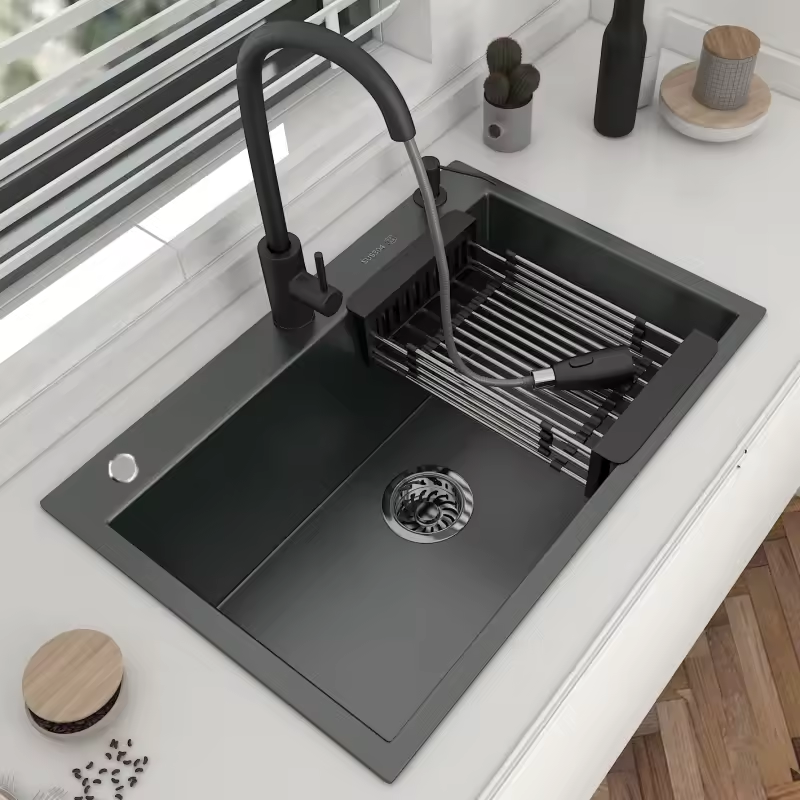
Functional Needs vs. Aesthetic Preferences
Evaluate daily requirements before selecting a sink material. Stainless steel sinks are ideal for high-usage kitchens due to their durability. Granite composite sinks can handle heavy cooking and cleaning while resisting scratches. Porcelain sinks suit light usage and decorative bathrooms.
If hygiene is your priority, copper sinks are antimicrobial and easy to maintain. For households with small children, choose materials resistant to dents and stains, like cast iron or granite composite. Combine your functional needs with aesthetic preferences to select the best sink material for your lifestyle.
Sustainability and Environmental Impact of Sink Materials
Understanding the sustainability of sink materials is essential for eco-conscious homeowners. Many options minimize environmental harm while offering great functionality and style. Let’s explore eco-friendly choices and how common materials contribute to sustainability.
Eco-Friendly Sink Material Options
- Recycled Stainless Steel:
- Made from reclaimed steel, reducing the need for raw material extraction.
- Durable and long-lasting, minimizing replacement frequency.
- Fully recyclable at the end of its lifecycle.
- Bamboo:
- A renewable material that grows quickly, reducing deforestation impact.
- Naturally water-resistant when treated, ideal for low-impact households.
- Copper:
- Sustainable when sourced responsibly or recycled from old materials.
- Offers natural antimicrobial properties, reducing cleaning chemical use.
- Granite Composite:
- Often made from recycled stone and resin, cutting down on waste.
- Durable and less likely to need replacements.
- Cast Iron with Recycled Enamel:
- Uses recycled metal and coatings, reducing new material demand.
- Extremely sturdy, making it a long-lasting, waste-reducing option.
Choosing an eco-friendly sink material reduces environmental impact and supports sustainable living.
Recyclability and Longevity of Common Sink Materials
- Stainless Steel:
- Highly recyclable, reducing landfill waste.
- Can last decades with proper care, enhancing sustainability.
- Porcelain:
- Less recyclable but offers long-term use if well-maintained.
- Its durability can offset environmental costs if replacements are rare.
- Granite Composite:
- Not always recyclable but made with long-lasting materials.
- Its lifespan reduces its overall environmental footprint.
- Cast Iron with Enamel:
- Fully recyclable and often made with recycled metals.
- Extremely durable, limiting replacement needs.
- Copper:
- 100% recyclable and valued for reuse in other products.
- Develops a patina, extending aesthetic value over time.
Sustainable materials not only benefit the environment but also offer lasting value for homeowners. By choosing durable and recyclable options, you can enjoy a stylish sink while supporting a greener planet.
Conclusion: Finding the Perfect Sink Material
Recap of Key Points
Choosing the right sink material combines functionality, durability, and style. Stainless steel sinks are versatile and cost-effective. Porcelain sinks add timeless elegance but require careful handling. Granite composite sinks offer strength and thermal resistance, perfect for modern kitchens. Cast iron sinks are durable and polished but need reinforced support. Copper sinks stand out with unique properties but require consistent maintenance.
Considering factors like durability, cost, design, and sustainability ensures a well-rounded choice. Eco-friendly materials like recycled stainless steel or copper support green living. Proper care keeps sinks lasting longer, maximizing their value.
Final Recommendations
Select a sink material based on your home’s design, budget, and usability needs. For modern homes, stainless steel or granite composite sinks work well. For timeless interiors, porcelain or cast iron sinks blend seamlessly. Copper sinks add rustic charm and antimicrobial benefits.
Ensure the material fits your lifestyle. Focus on durability for high-use areas or choose style for decorative spaces. Prioritize sustainability by opting for recyclable and long-lasting materials. With careful consideration, you can find the perfect sink for your home.

